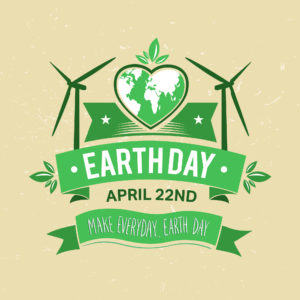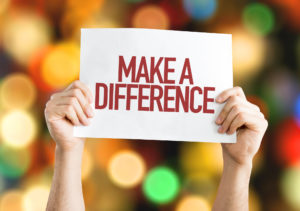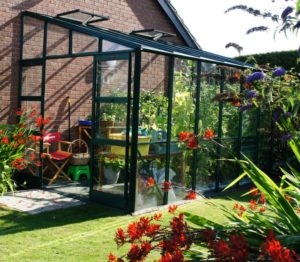Our latest One in a Million member is Nancy, an Episcopal priest and practicing psychologist who lives in central New York state. The One in a Million campaign encourages people to shift $1,000 of their household budget to greener products and services. I was amazed to learn how Nancy has shifted so much she is actually saved more than $10,000 without feeling deprived. Here’s her story.
What inspired you to make so many “green” changes in your life? My doctoral studies were in MindBody medicine and holistic healing…which led directly to my first change: become a vegetarian(1991)—which reversed bone loss. In the intervening years I continued to study, teach courses, and give lectures and workshops on holistic healing and spirituality. My studies and workshop presentations expanded in 2005 after I learned about the known health risks associated with land fills at a meeting of the local chapter for the League of Women Voters. The local land fill had expanded despite opposition and was (and is again) asking to expand.
Troubled by the evidence, I began reading about recycling, which led me to studies about plastics, cleaning agents, bath and body care, cosmetics, and, surprisingly, food safety and how they affected human health and the environment. The readily available evidence was, and remains, shocking and deeply distressing. I believe that all of us need to be more conscious of the factors which affect our health and over which we can chose to have control, with our voices, pocket book, and votes. As a person living with a life-long disability I felt that, based on this new learning, I had a responsibility to act on it by making conscious choices about my life and health as I move toward retirement and continued aging! That led to my second change: I became a vegan, eating only organic foods at home, and have reaped more health benefits than I imagined possible. No more antibiotics and hormones I didn’t chose, need or want; no more insecticides and pesticides bred into Genetically Engineered foods—as far as I can determine and choose; reading labels to avoid corn derivatives and high fructose.
All of this learning, alongside continued growth and new learning in my spirituality and prayer life, led me to my third change: a decision to become conscious and present to the world and nature around me, as well as to family, friends, and neighbors. All of life breathes the same air, is exposed to the same water, and shares the consequences of toxins in the land fill. The very least I could do was to avoid adding toxic, disposable, meaningless stuff or organic garbage, leading to my fourth change: changing my patterns of consumption, understanding the what and why of every purchase. Suddenly you see the stuff that clutters home, office, car and life. Stuff that wastes financial resources and generally obscures the meaning or purpose of one’s life. De-cluttering is a lesson in letting go and led to my fifth change, saving money as my shopping habits changed.
Are your choices for you alone or for a household? I live alone but children and grandchildren visit often. They know the routine — I have posted a list of what items go in the paper basket, the compost pail, the small garbage basket, the shredder and the recycling can (in kitchen). The cleaning woman, handy man, and lawn person know what does where in garage containers each week.
What was harder than you thought? Eating out with NO dairy products. My experience has been that the majority of restaurants, chefs, and cooks in small cities are not well-informed or prepared to serve vegetarians and vegans.
What was easier? The absolute easiest thing was simply adding each new change as I came to it and then living into it. I have a savings account for my ‘annual savings,’ which I use for life-giving organic foods, addressing needs (recreation, retreat, play) instead of wants, and enjoying a healthier and more purposeful life!
What’s next? These changes are part of a spiritual journey that I hope will continue to evolve and deepen. I hope my example or words will save at least one person and one child from the toxic effects known to exist in our environment, water, food, and products we consume or purchase in blind faith. My greatest hope is that in the near future, Americans will take to the streets and demand accountability of corporations and government agencies for safe food and water, and non-toxic, renewable and sustainable products. If we dream GREEN, we will become GREEN!
Nancy’s Green practices explained with savings:
Switch to natural cleaning agents – saving $800-900/yr. By natural, I mean: vinegar, baking soda, lemons, castile or natural soaps, peroxide, salt.NO BLEACH.
Create zero waste – saving $180/yr. The zero-waste effort led to canceling my trash service. In addition to a monthly fee, they charged per bag beyond 2 bags, which can happen if your put leaves and grass clippings out. All organics, wet garbage, yard waste, and shredded paper, compostable picnic table ware (rare) go into compost. I have two piles so one is in use while second matures and gets used up. I use the simple layer method which Cornell advocates. I take my recycling to the municipal solid waste transfer station every 3 months. I also take one (1) $3.50 large plastic bag with non recyclable, non compostable garbage once a year.
Drink and carry tap water – saving $500+ annually. I don’t want plastic toxins leaching every minute into my water. Plus, I want to eliminate CO2 emissions and costs of plastic bottles and transporting water world wide, often at the expense of poor people with little or no access to their own water supplies.In addition to saving money, I am expressing my personal values and beliefs in the face of big corporations that bottle and sell for profit water at the expense of poor people whose right to it has been stolen. (Here are some reusable bottle options.)
Buy $.99 reusable grocery bags, eliminating real costs of using and disposing of plastic bags – savings $100/yr. These bags are also often used for giving small gifts rather than purchasing gift bags or wrapping paper, tape, ribbon, bows.
Limit gift giving – saving $500. My gift giving is generally limited to a small gift to open and a donation for relief of poverty in some way (e.g. mosquito nets; poultry to raise, feed, sustain income for a family; building a school in Sudan; and now, for Haiti.) There’s no over-spending for “just one more gift.” No environmental costs.
Drive fuel-efficient car less – saving an average of $100-$150/month, or $1200 – $1800/yr. As often as possible, I plan errands, appointments, and work travel so I can drive in a circle and save extra trips to buy food. There are always the unexpected trips but planning cuts down on fuel costs. If I need something at the home improvement store/mall I wait, if possible, until I have a list of everything I need from stores in that area (12 miles away). This has cut shopping trips to the mall area to 4 or less per year. I generally work from a home office which also cuts fuel consumption.
Buy no fragrances: no perfume, scented candles, or air-freshners – saving $500+ annually. I open windows or doors; use all natural cosmetics, limited to foundation & rouge (see Cosmetics Database). Bath and body products are w/o fragrance and generally cost less. The health benefits are related to avoiding carcinogens, nano particles, phthalates, and asthma-causing ingredients.
Avoid plastic wrap – saving $150 annually. I use brown wax paper in microwave (limited use) and re-useable plastic bowl covers or lids for food storage in glass kitchen ware. I never purchase plastic food containers.
Minimize paper – saving $300. I use compostable picnic ware for those few times I am unable to use washable ware. I read newspapers online. When purchasing subscriptions to journals or placing catalog orders I request my contact info not be rented or sold. I am registered on the Mail Preferencing services and have a note on my credit records. This effort dramatically reduces junk mail and the amount of recycling I need to do. All loose paper goes through my shredder and is added to compost pile. Magazines and journals are generally saved or shared.
Use compact light bulbs & other efficient appliances – saving $200/yr. CFLs, which last 708 years and use less electricity, power all light fixtures. I replaced my old refrigerator 4 years ago and purchased an energy-saving dishwasher recently. I turn off my computer when away from my desk for more than two (2) hours and overnight. I turn off and unplug all electronics not in use, including the flat screen TV. I only turn on lights in rooms being occupied by a person and have attractive night lights in rooms which we may need to visit briefly after dark. My TV use is limited to evening news and occasionally a PBS special.
Buy used, refurbished goods – saving $2,000/yr, plus gas, energy and time to shop. My purchases, beyond health and house maintenance, are generally confined to gently used, repurposed, or refurbished items.
Grow own food – saving $450-$500 on food, garden chemicals. I have two “square foot garden” boxes in which I grow organic produce every year, and share with a daughter and family. I figure I save $700.00, of which I use $350.00 for a CSA share for fruits, potatoes, and other or, unusual, vegetables I don’t grow.
Conserve water – saving $100/yr. I installed two free rain barrels, offered by our county storm water management for attending a course on storm water. The rain barrels collect roof water run off, which I use to water front and back, including vegetable, gardens. I have a small home but collected enough water to keep both barrels full all but a few days last summer, watering daily.
Installed gravel driveway – saving $4,000. My paved driveway was torn up to install a dry ditch four years ago (for run off from a side hill). Hard surfaces cause storm water flooding and permit toxins to reach water supplies. Without hard surfaces, ground water is filtered by soil before it reaches water supplies. Consequently I choose not to repave the drive and instead have crushed stone. (I live in a traditional, residential neighborhood.)
Feeling inspired? Take the One in a Million challenge yourself. Get started here.

















4 thoughts on “New Yorker Shifts to Green, Saves More Than $10K”
I think this is wonderful, everybody should be doing it. Not just for the environment but for themselves,
It seems when ever we hear environment or go Green that people think only of there outside surroundings, but this Going Green has another aspect it will also help a persons health and internal environment we then can save our planet and the humane race.
You are so right, Dee!
I love the idea of keeping track of how much money different green/conservation efforts are saving us. I don’t know if I could get to $10,000 but I am going to start tracking it.
Great, Michelle! I can’t wait to hear how you do it. Welcome to the One in a Million campaign.
Comments are closed.